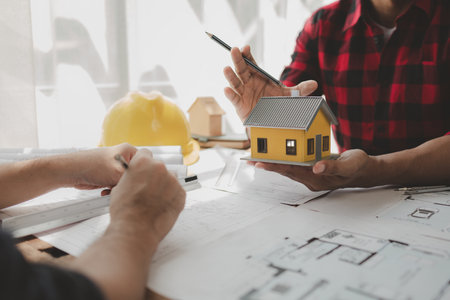First Impressions Matter: Curb Appeal Essentials
When it comes to selling your home fast, curb appeal can make or break a buyer’s first impression. Before they even step inside, potential buyers are already forming opinions based on how your home looks from the street. The good news is, you don’t need a massive budget to create a welcoming exterior. A few simple updates can go a long way in making your property more attractive and inviting.
Enhance Your Landscaping
Well-kept landscaping gives the impression that the home is cared for and move-in ready. Trim overgrown bushes, mow the lawn regularly, and remove weeds. Adding fresh mulch and seasonal flowers can add color and freshness to your yard.
Quick Landscaping Tips:
| Task | Why It Matters |
|---|---|
| Mow the lawn | A neat lawn shows buyers that the property is well-maintained |
| Trim bushes & hedges | Overgrown plants can make your home look neglected |
| Add fresh mulch | Gives flower beds a clean and polished look |
| Plant seasonal flowers | Adds bright, cheerful colors to the front yard |
Upgrade Your Front Door
The front door is one of the first things buyers will notice. A freshly painted or new front door can dramatically improve your homes appearance. Choose a modern yet neutral color that complements your houses exterior. Don’t forget about hardware—polished knobs and a stylish door knocker add instant charm.
Front Door Upgrade Ideas:
- Paint it: Choose colors like navy blue, charcoal gray, or classic red for a bold but tasteful look.
- Replace hardware: Swap out old doorknobs and locks for sleek, modern versions.
- Add lighting: Install sconces or lanterns to frame your door with warm light.
- Decorate seasonally: A tasteful wreath or welcome mat adds a cozy touch without clutter.
Tidy Up the Porch Area
A clean and styled porch can encourage buyers to imagine themselves relaxing there. Sweep away dirt and cobwebs, power wash surfaces if needed, and consider adding potted plants or a small bench to create an inviting space.
Pro Tip:
If you have outdoor furniture, keep it minimal and in good condition. Too much furniture can make porches feel smaller than they really are.
Dont Forget Driveways and Walkways
Crumbling pavement or stained concrete can be distracting. Pressure wash these areas and repair any cracks. If possible, line walkways with solar lights for a charming evening glow during late-day showings.
Curb Appeal Checklist:
- Lawn mowed and edged
- Bushes trimmed neatly
- No weeds in garden beds or sidewalks
- Fresh paint on front door (or replaced if damaged)
- Clean windows visible from outside
- Tidy porch with minimal décor
- Driveway/walkway cleaned and free of cracks or stains
- House numbers clearly visible and stylish
Creating curb appeal doesn’t have to be expensive—it just takes attention to detail. These small changes add up quickly and help make sure buyers fall in love at first sight.
2. Declutter and Depersonalize
When it comes to staging your home for a quick sale, one of the most important steps is decluttering and depersonalizing. Buyers want to imagine themselves living in the space, and that’s hard to do when its filled with someone elses memories or too much stuff.
Why Decluttering Matters
A cluttered home can feel smaller and less inviting. By removing excess items, youre not only making the space look cleaner but also allowing buyers to focus on the actual features of the home—like the hardwood floors, spacious closets, or natural lighting—instead of getting distracted by your belongings.
Areas to Focus On:
| Room | What to Declutter |
|---|---|
| Living Room | Excess furniture, magazines, remote controls, personal photos |
| Kitchen | Countertop appliances, fridge magnets, food containers, dish racks |
| Bedrooms | Clothes not in use, extra pillows, personal decorations |
| Bathrooms | Toiletries on counters, used towels, personal care products |
| Garage/Basement | Tools, storage boxes, seasonal items not needed for staging |
The Power of Depersonalization
Your home tells your story—but when youre selling it, you want buyers to start imagining their own. This means taking down family photos, kids’ artwork, religious items, and anything that reflects personal beliefs or lifestyle. Neutralizing the space helps make it appealing to a wider range of buyers.
Tips for Depersonalizing:
- Replace family portraits with neutral artwork or mirrors
- Store away collections and unique decor items
- Avoid bold wall colors—opt for soft neutrals like beige or light gray instead
- If possible, remove personalized name signs or monogrammed items
Create a Blank Canvas
The goal is to create a clean slate—a space where potential buyers can mentally move in. Think of it like setting up a model home: stylish yet simple, cozy but not crowded. When done right, decluttering and depersonalizing can help sell your home faster and often at a better price.
![]()
3. Furniture Placement and Flow
When staging your home for a quick sale, how you arrange your furniture can make a big difference. The goal is to create a layout that feels spacious, functional, and welcoming to potential buyers. You want them to walk in and immediately feel like they could live there.
Keep It Open and Airy
Avoid overcrowding rooms with too much furniture. Less is more when it comes to staging. Removing extra pieces allows the space to breathe and appear larger. Make sure theres plenty of room to walk through each area without bumping into anything.
Tip:
Try to leave at least 2-3 feet of walking space between major pieces of furniture.
Create Natural Pathways
Think about how people will move through the home during showings. Arrange furniture in a way that guides them naturally from one space to another. Avoid blocking doorways or windows, as this can make rooms feel cramped or awkward.
Highlight the Room’s Purpose
Every room should have a clear function. Buyers should immediately understand whether a room is meant for dining, working, relaxing, or sleeping. Use furniture placement to emphasize this purpose.
| Room | Main Function | Staging Tip |
|---|---|---|
| Living Room | Relaxation & Entertaining | Center seating around a focal point like a fireplace or TV; use a rug to define the space. |
| Dining Room | Eating & Gathering | Use a table with chairs (even if small); add simple centerpiece for warmth. |
| Home Office | Work & Productivity | Add a desk and chair; keep decor minimal but inviting. |
| Bedroom | Rest & Comfort | Position bed as the focal point; use matching nightstands if possible. |
Balance and Proportion Matter
Select furniture that fits the scale of the room. Oversized sofas in small living rooms can make the space feel tight, while tiny furniture in large rooms can look awkward. Aim for balance by pairing appropriately sized items together.
Let In the Light
Avoid placing tall furniture in front of windows or light sources. Natural light makes any room feel more inviting, so keep window areas clear and open whenever possible.
Pro Tip:
If your room lacks natural light, add floor or table lamps to brighten up dark corners and create a cozy ambiance.
The Final Look
Your staged home should feel easy to navigate, visually balanced, and comfortable. With thoughtful furniture placement and mindful flow, you’ll help buyers connect emotionally with the space — which can lead to faster offers and better results.
4. Lighting and Color: Setting the Mood
When it comes to staging your home for a quick sale, lighting and color are two of the most powerful tools you can use to influence how buyers feel when they walk through your space. The right lighting can make your home feel warm and inviting, while a well-chosen color palette helps potential buyers imagine themselves living there.
Maximize Natural Light
Natural light is a major selling point for any home. Bright, sunlit rooms appear larger, cleaner, and more cheerful. To make the most of the daylight:
- Open all curtains and blinds during showings.
- Clean windows inside and out to allow more light in.
- Trim bushes or trees that block windows from outside.
Layer Your Lighting
A single overhead light isnt enough to create a welcoming atmosphere. Layered lighting adds depth and warmth to each room. Heres a simple breakdown:
| Lighting Type | Description | Best Used In |
|---|---|---|
| Ambient Lighting | Main source of light (e.g., ceiling lights) | Living room, bedrooms, kitchen |
| Task Lighting | Lamps or under-cabinet lighting for specific tasks | Kitchens, offices, reading nooks |
| Accent Lighting | Adds drama and highlights features (e.g., wall sconces) | Dens, hallways, artwork displays |
The Power of Neutral Colors
A fresh coat of paint in neutral tones can completely transform a space. While bold colors may suit personal tastes, neutrals are universally appealing and help buyers envision their own furniture and style in the home. Consider these popular options:
| Tone | Description | Mood It Creates |
|---|---|---|
| Crisp White | Cleans up spaces and reflects natural light beautifully | Bright, airy, clean |
| Soft Gray | A modern neutral that pairs well with many styles | Sophisticated, calming |
| Warm Beige or Taupe | Adds subtle warmth without being overpowering | Cozy, welcoming |
Create Emotional Impact Through Atmosphere
The goal of staging is to make buyers feel at home the moment they step inside. When your home is well-lit and painted in appealing colors, you create an emotional connection that can lead to quicker offers. Soft lamp lighting in the evenings or strategically placed warm-toned bulbs can enhance this effect even further.
A Quick Checklist for Mood-Setting Success:
- [ ] Open window treatments before every showing.
- [ ] Replace outdated or harsh light fixtures with softer alternatives.
- [ ] Use floor or table lamps to fill dark corners.
- [ ] Repaint walls in soft neutrals if existing colors are too bold or dated.
- [ ] Add dimmer switches where possible for adjustable ambiance.
Together, great lighting and color choices can completely change how buyers experience your home—making them more likely to fall in love at first sight.
5. Showcasing Key Areas: Kitchens, Bathrooms, and Bedrooms
When staging your home for a quick sale, its essential to focus on the rooms that buyers care about most—kitchens, bathrooms, and bedrooms. These spaces play a major role in a buyer’s decision-making process. Properly staging them can highlight their functionality, style, and overall value.
Kitchen: The Heart of the Home
Buyers often see the kitchen as the most important room in the house. A clean, modern-looking kitchen creates an immediate positive impression. Even if you don’t have a full renovation budget, small touches go a long way.
Tips for Staging Your Kitchen:
- Clear countertops of all clutter—leave only one or two decorative items like a bowl of fresh fruit or a cookbook.
- Deep clean appliances, sinks, and backsplashes until they sparkle.
- Replace old cabinet hardware with modern handles or knobs for an easy refresh.
- Add warm lighting under cabinets if possible.
Bathroom: Clean and Spa-Like
A clean and calming bathroom helps buyers envision a relaxing retreat. Think of how hotels stage their bathrooms—minimal but luxurious.
Tips for Staging Your Bathroom:
- Remove personal items like toothbrushes and razors from view.
- Add fresh white towels and a simple decorative soap dish or candle.
- Make sure mirrors are spotless and lighting is bright but flattering.
- Use neutral-colored shower curtains and rugs to appeal to more buyers.
Bedrooms: Comfort Meets Style
The bedroom should feel peaceful and spacious. Buyers want to imagine themselves unwinding here at the end of the day. Keep it gender-neutral and clutter-free to appeal to everyone.
Tips for Staging Bedrooms:
- Use fresh bedding in soft, neutral tones—add decorative pillows for texture.
- Keep nightstands tidy with just one or two items like a lamp or small plant.
- If space allows, create a reading nook with a chair and small table.
- Make sure closets are organized to suggest ample storage space.
Quick Room-by-Room Checklist
| Room | Staging Focus |
|---|---|
| Kitchen | Declutter surfaces, update hardware, deep clean appliances |
| Bathroom | Add spa-like touches, remove personal items, keep it spotless |
| Bedroom | Create calm with neutral bedding, minimal decor, tidy storage |
By spotlighting these key areas with thoughtful staging, you help potential buyers see not just what your home is—but what it could be for them. This emotional connection can make all the difference when selling quickly in a competitive market.


